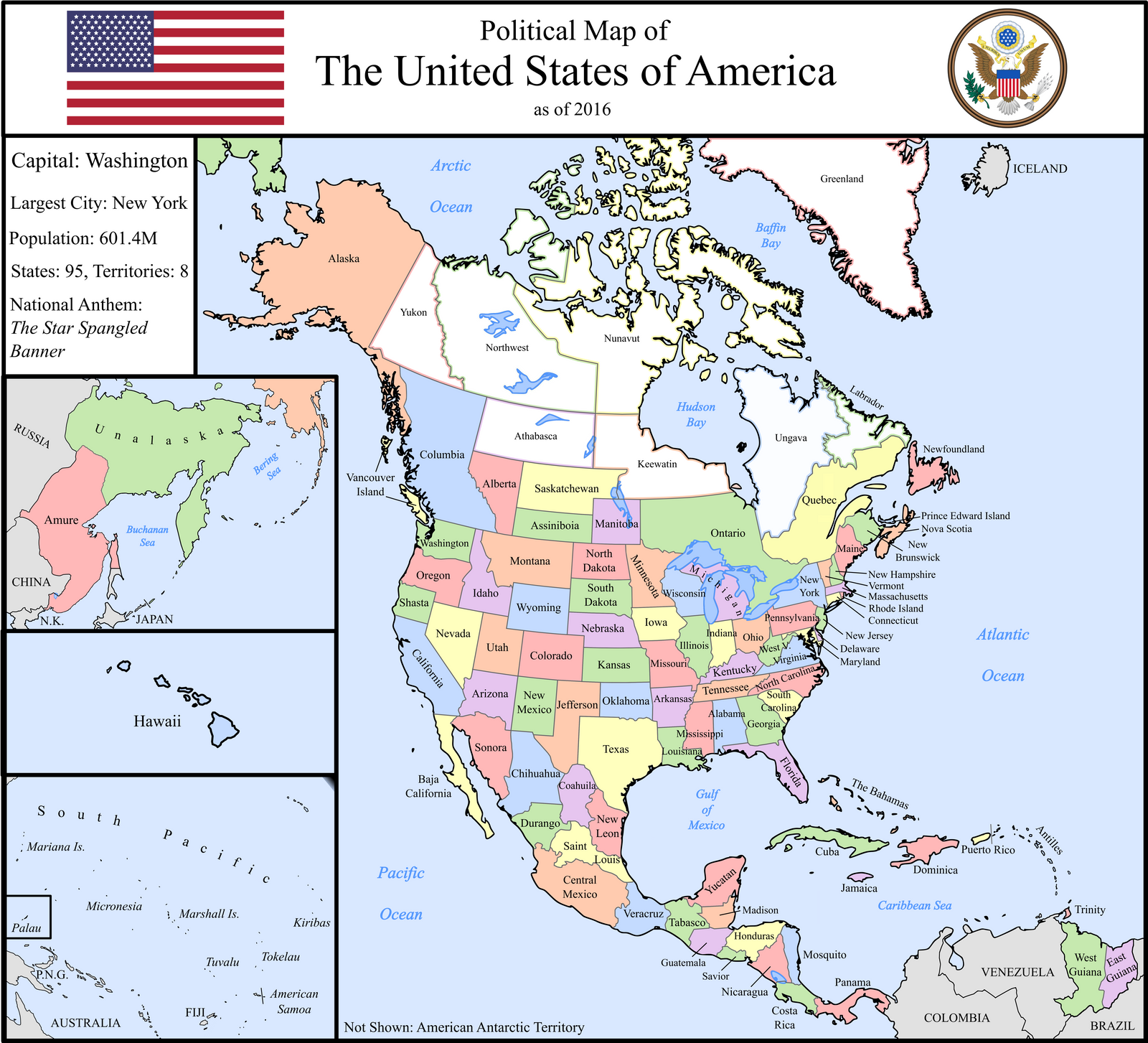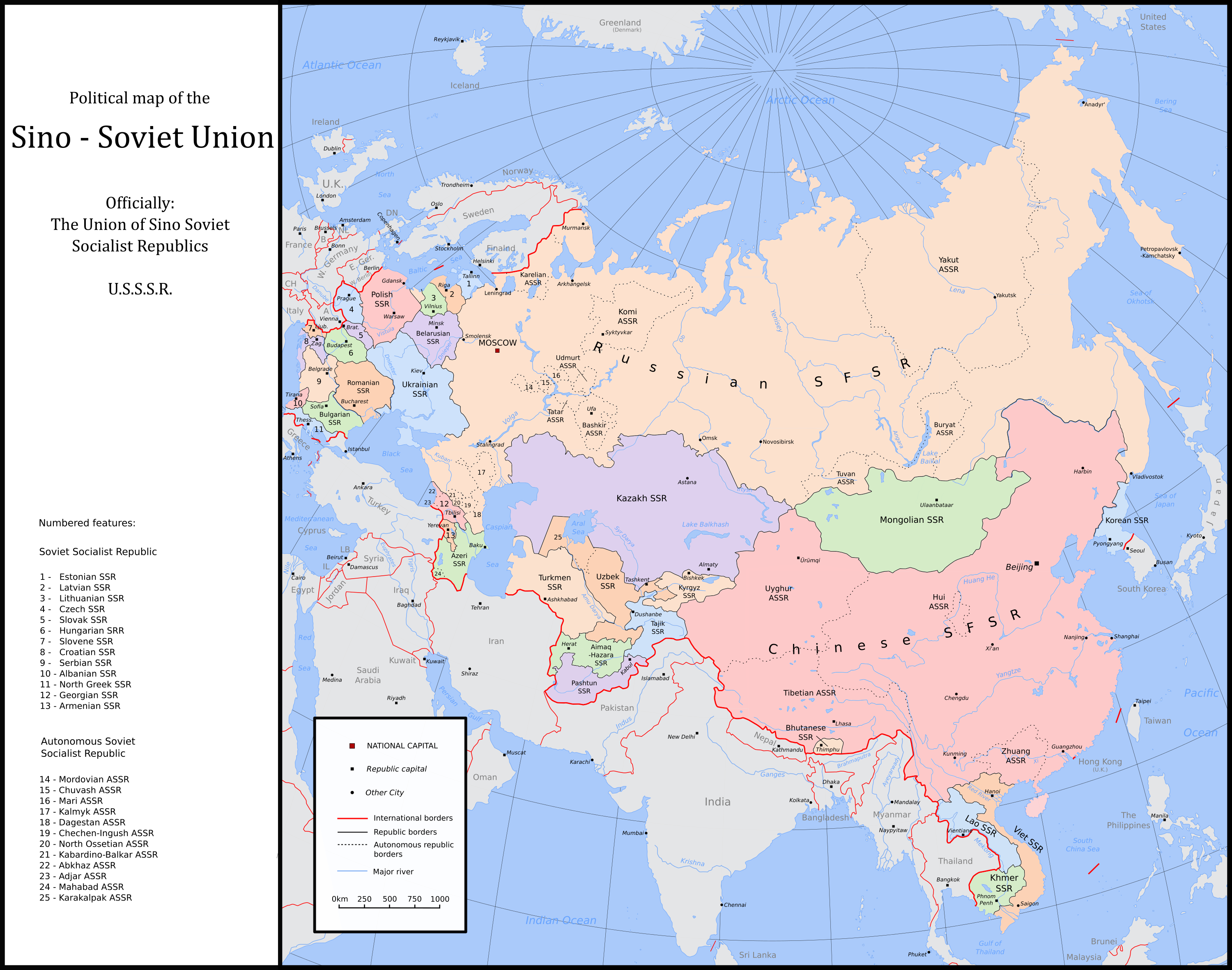My latest remake is here of my 1944 map for my timeline, Beauty Before Bedlam.
The Federation of People's Republics is the successor state to the Russian Empire. In the autumn of 1917, their Constituent Assembly came under the control of a successful coalition between moderate Social Democrats and Socialist Revolutionaries. Led by Chairman Vladimir Zenzinov, they accomplished a great deal of economic reconstruction and technological modernization in their country following the Great European War. The Roaring Twenties are remembered as a time of development and prosperity until the onset of the Great Depression of 1930.
At the start of the Great Eurasian War, the People's Federation was still in the early years under the radical administration of Chairman Leon Trotsky as its chief executive leader. A founding member of the revolutionary New Worker's Party, Trotsky initially decided against military intervention to protect the Republic of China against invasion by the Japanese Empire. His coalition in the Assembly instead opted for sanctions and diplomacy. However, after the Japanese Army invaded the Great Wall region of China in violation of their treaty obligations, the Assembly finally relented and declared war against them in 1934.
While it took time to mobilize the bulk of their troops to their eastern frontier, the People's Army far outmatched the Imperial Japanese Army. Rocket attacks and focused tank deployments gave them a decisive advantage over their opponents. Following the Liberation of Korea, Japanese Emperor Hirohito sued for peace in the summer of 1940, just as the Axis Powers invaded the Kingdom of Yugoslavia, beginning the Western phase of the Great Eurasian War.
Georgian Minority Leader Joseph Jugashvili became notorious at the Federal Assembly rallying a majority of deputies to oppose a declaration of war against the Axis Powers for invading the Kingdoms of Greece and Yugoslavia, arguing instead for more trade and collaboration against the twin evils of capital and empire. The war-weary government and people of the People's Federation agreed to ongoing peace even after the Fall of France. Chairman Trotsky never gave up his indignant preparation for war in the West, marshalling every bit of influence he still had left to resist cuts in the military budget.
The beginning of Operation Barbarossa in March 1943 with the Axis invasion of the Hungarian Social Republic finally convinced the Federal Assembly to declare war against the Axis Powers. Axis forces, led by the Nazi German Wehrmacht, were able to occupy Hungary entirely and capture both Petrograd and Baku by the end of the year (although both had been devastated by intensive air bombing and rocket strikes). This was for naught, however, as Chairman Trotsky had won a key diplomatic victory by building a secret alliance with American President Norman Thomas, who defied his earlier positions of pacifism to bring his country into the war as a full partner against the Axis Powers over the summer. Landings in Morocco and Algeria as well as continued pressure from the British Armed Forces, the Free French and the British Palestinian Defense Forces at sea and beyond guaranteed that the tide in the Great Eurasian War had turned.
January 1st, 1944 at the Furthest Extent of the Axis Powers Invasion of the People's Federation

The Federation of People's Republics is the successor state to the Russian Empire. In the autumn of 1917, their Constituent Assembly came under the control of a successful coalition between moderate Social Democrats and Socialist Revolutionaries. Led by Chairman Vladimir Zenzinov, they accomplished a great deal of economic reconstruction and technological modernization in their country following the Great European War. The Roaring Twenties are remembered as a time of development and prosperity until the onset of the Great Depression of 1930.
At the start of the Great Eurasian War, the People's Federation was still in the early years under the radical administration of Chairman Leon Trotsky as its chief executive leader. A founding member of the revolutionary New Worker's Party, Trotsky initially decided against military intervention to protect the Republic of China against invasion by the Japanese Empire. His coalition in the Assembly instead opted for sanctions and diplomacy. However, after the Japanese Army invaded the Great Wall region of China in violation of their treaty obligations, the Assembly finally relented and declared war against them in 1934.
While it took time to mobilize the bulk of their troops to their eastern frontier, the People's Army far outmatched the Imperial Japanese Army. Rocket attacks and focused tank deployments gave them a decisive advantage over their opponents. Following the Liberation of Korea, Japanese Emperor Hirohito sued for peace in the summer of 1940, just as the Axis Powers invaded the Kingdom of Yugoslavia, beginning the Western phase of the Great Eurasian War.
Georgian Minority Leader Joseph Jugashvili became notorious at the Federal Assembly rallying a majority of deputies to oppose a declaration of war against the Axis Powers for invading the Kingdoms of Greece and Yugoslavia, arguing instead for more trade and collaboration against the twin evils of capital and empire. The war-weary government and people of the People's Federation agreed to ongoing peace even after the Fall of France. Chairman Trotsky never gave up his indignant preparation for war in the West, marshalling every bit of influence he still had left to resist cuts in the military budget.
The beginning of Operation Barbarossa in March 1943 with the Axis invasion of the Hungarian Social Republic finally convinced the Federal Assembly to declare war against the Axis Powers. Axis forces, led by the Nazi German Wehrmacht, were able to occupy Hungary entirely and capture both Petrograd and Baku by the end of the year (although both had been devastated by intensive air bombing and rocket strikes). This was for naught, however, as Chairman Trotsky had won a key diplomatic victory by building a secret alliance with American President Norman Thomas, who defied his earlier positions of pacifism to bring his country into the war as a full partner against the Axis Powers over the summer. Landings in Morocco and Algeria as well as continued pressure from the British Armed Forces, the Free French and the British Palestinian Defense Forces at sea and beyond guaranteed that the tide in the Great Eurasian War had turned.
January 1st, 1944 at the Furthest Extent of the Axis Powers Invasion of the People's Federation
Last edited:





